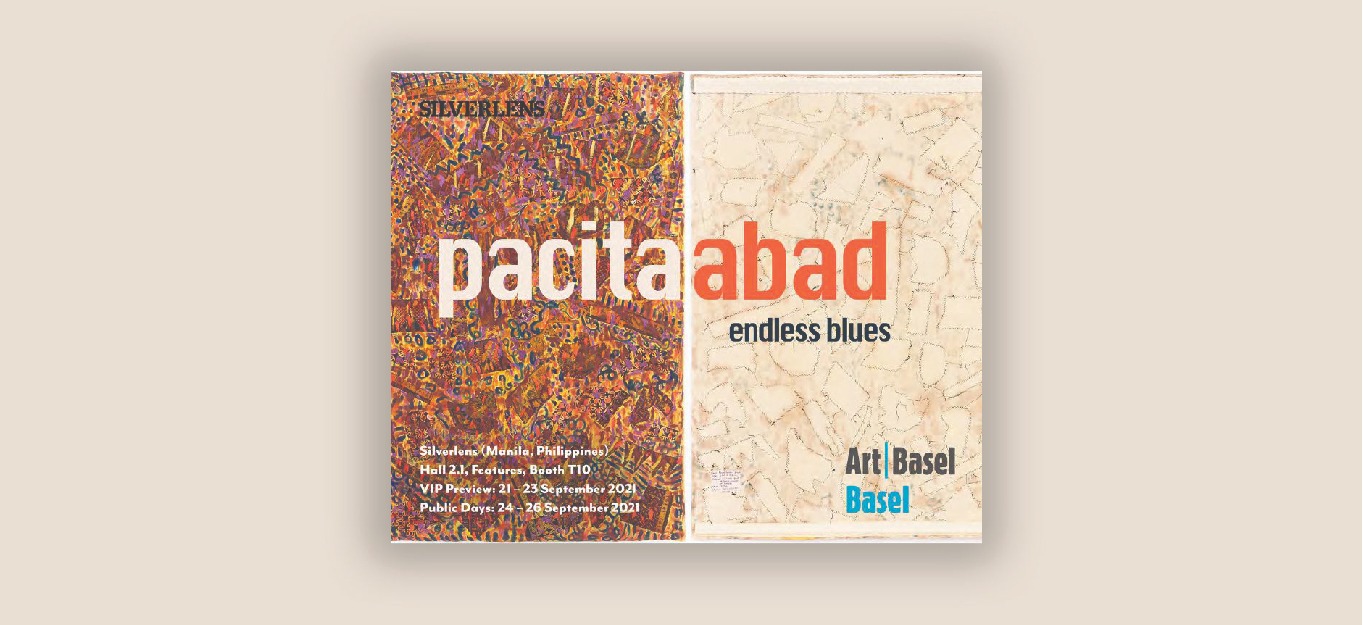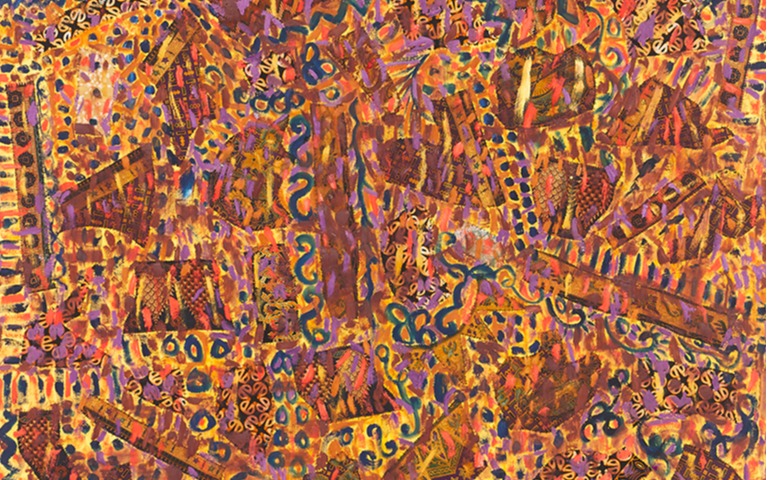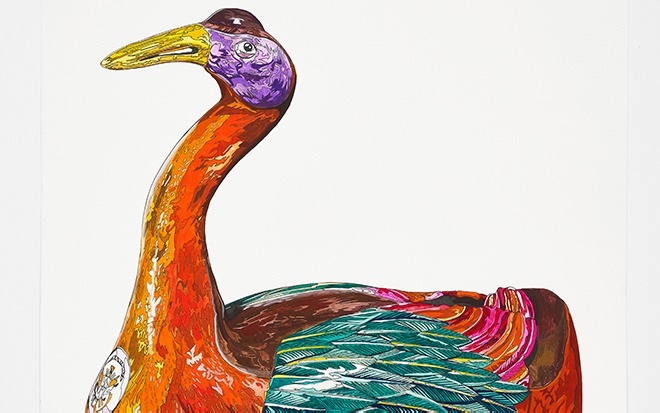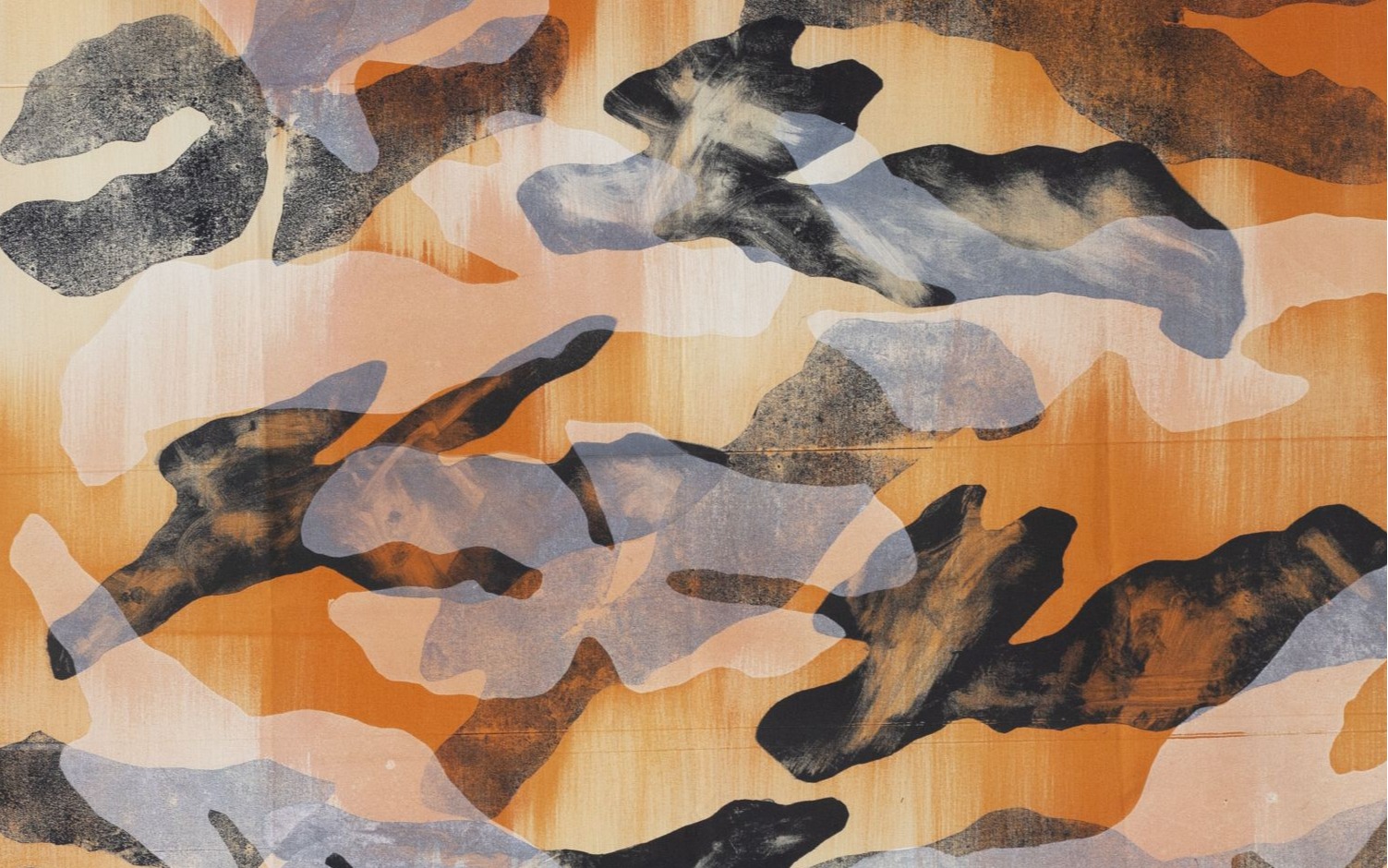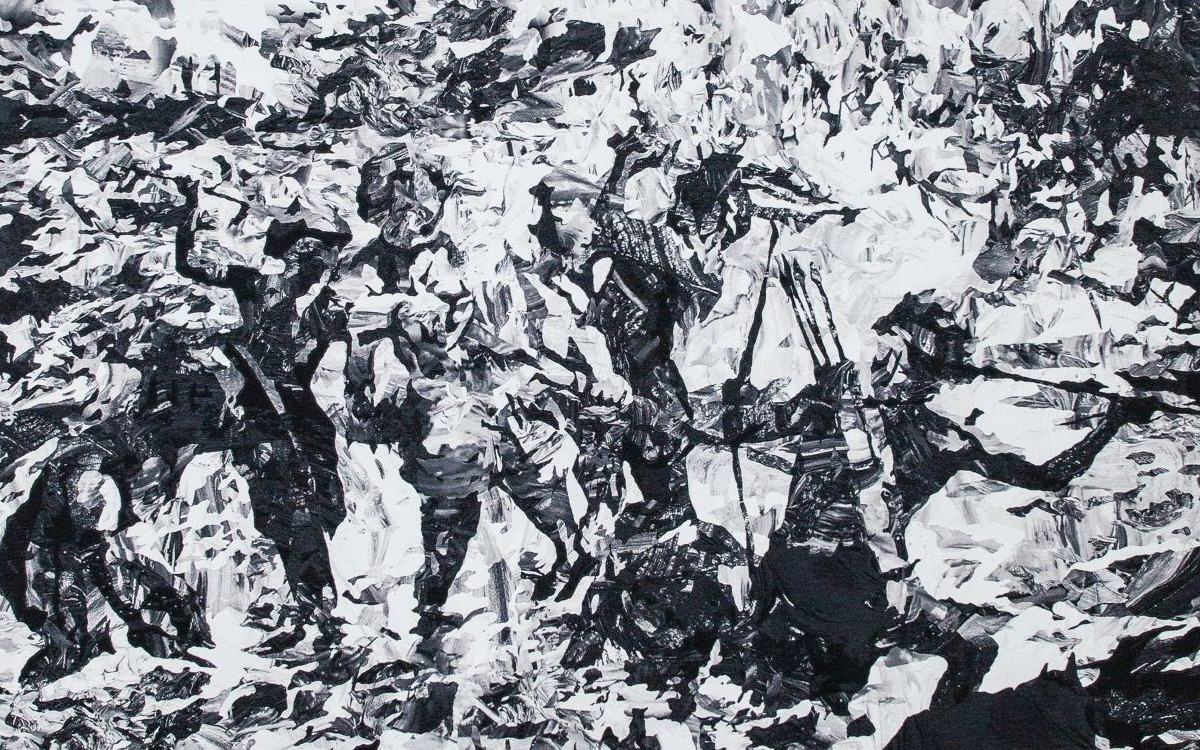
Art Basel Features 2021
Pacita Abad, Pio Abad, Nicole Coson, Patricia Perez Eustaquio
Messe Basel, Switzerland
About
SILVERLENS is pleased to be participating in Art Basel in Basel for the third time. Previous participations featured Maria Taniguchi and Martha Atienza. This year, the gallery will exhibit Pacita Abad: Endless Blues in the Features section of the fair, Booth T10.
Silverlens will feature the work of late Filipino-American artist Pacita Abad (b. 1946, Batanes, Philippines, d. 2004, Singapore), with exceptional art historical material produced in the last years of the artist’s life. A pluralist approach to image-making across cultures, histories, and styles underpins Abad’s work throughout the decades, offering an informed and idiosyncratic global perspective on art-making as a cultural tradition rooted in many places at once. The presentation will focus on her Endless Blues series from the early 2000s. Produced towards the later years of the artist’s life, these works bring together Abad’s fascination with batik fabric, her love for blues music, and embeds the colour, energy, and vibrancy of a life on the road in diverse forms of abstraction. Silverlens is delighted to exhibit Pacita Abad, a historically important artist, for the first time to the discerning public of Art Basel.
Three contemporary artists will be featured alongside the late artist through the Art Basel OVR. Artists who are connected to the artist, either in form or in history. Pio Abad (b. 1983, Manila, lives and works in London), Patricia Perez Eustaquio (b. 1977 Cebu, lives and works in Baguio City) and Nicole Coson (b. 1992, Manila, lives and works in London) will be showing curatorially relevant pieces, including new works.
Empathy deeply informed Pacita Abad’s life, practice, and interactions with others. Born in Batanes, Philippines, Abad travelled continuously, connecting with diverse groups of people along the way. Her journeys and dwellings around the world strengthened her compassion for difference, and rooted her art in reality. Whereas abstraction is often thought of as the absence of temporality, Abad’s Endless Blues is this culmination of being in the world; her abstraction instead allows the ambiguous space for difference to manifest and thrive. Blues train to Yogya, Early one Morning, and Paris in the Fall illustrate this comprehensive understanding of life in all its unpredictability and totality.
In the early 2000s, galvanised by globally and personally turbulent intersections of her life, Abad embarked upon the Endless Blues series. The September 11 attacks and subsequent War in Afghanistan deeply affected the artist. ‘Endless Blues is also an apt description of how I, and most of the world, felt after September 11 and the ensuing battle in Afghanistan. New York and Afghanistan are two of the places that I have always loved, having lived in lower Manhattan and hitchhiked around Afghanistan,’ Abad lamented. ‘Seeing disaster, tragedy and suffering hit people in both of those places brought me down.’ Simultaneously, the artist had been diagnosed with cancer and was undergoing radiotherapy and chemotherapy.
The impact of these simultaneous pains caused her to turn inwards, spending long introspective hours in her studio immersed in the blues music of musicians such as Ray Charles, Paul Butterfield, Koko Taylor, and Etta James. Blues train to Yogya from 2002 plays on ‘Midnight Train to Georgia’ by Gladys Knight & The Pips, replacing the destination with the Indonesian city Yogyakarta. The Blues Aesthetic is rooted in what historian Amiri Baraka calls a continuum of the African-American and African diasporic experience, a continuous exploration of the collective, generational, and personal history within music.
Similarly, Abad’s work carries her own sympathies for the cultures she respectfully borrows from, alongside her personal memories. The Endless Blues series resound in her contemporaneous present; these paintings embody collective and personal histories within the moments of the artist’s spontaneous and physical processes of creation.
First, she would incorporate batik and ikat fabric – Indonesian fabric made from various methods of dyeing – by sewing them unto colour ground canvases. Abad first introduced these fabrics into her practice in 1994 while living in Indonesia, a continuation of incorporating the fabrics and textiles she acquired in her travels into her own artwork in an empathetic act of assemblage. Not only does this process of stitching imbue a dimension of cultural history, it also serves as a persistent link to Abad’s mother who said sewing, cooking, and typing granted women independence. Eventually, Abad mastered these skills and brought sewing to the canvas which allowed her to expand the surface. Looking at the versos of these paintings provides a clearer sense of the material’s placement, as well as the various coloured threads which add an extra dimension of care.
Abad’s physical gesture of improvised layering and resurfacing of pigment result in the frenetic patterns seen across the fabric. The corporeal action encapsulates the spontaneous multiplicity of emotion – nostalgia and solemnity, but also optimism and vigour – on behalf of herself and others: ‘Like the blues, my paintings are always strong, sometimes sad, a bit nostalgic and very colourful.’ In Early one morning from 2003, for example, the master colourist deploys a cacophony of seemingly chaotic colour and form with harmony; the painting initially appears overwhelmingly warm with pink, red, and orange tones, however, complimentary dashes, circles, and zigzags of cooler tones balance the composition.
Throughout her colourful life, Abad maintained ‘…that, as an artist, I have a social responsibility for my painting, to try to make our world a little better.’ Within her other series such as Immigrant Experience or Masks and Spirits Abad figuratively engages with the world and society’s complex constructions. She also volunteered at refugee and immigration centres and participated in community activities like educational initiatives and workshops. But with Endless Blues, she confronts the ontological question of being and its inevitable adversity; here, the artist allows herself the space to mourn, but ultimately responds with radiance. In Paris in the Fall from 2003, a multitude of golden yellow, burnt orange, and mint green strokes layer over one another to immerse the viewer in a vivid stretch of pigment. The autumn season is a transitory one where leaves turn and fall, however instead of focusing on this languish, Abad chose to inundate the canvas with bright tones symbolic of light and life.
The Endless Blues series are overwhelmingly paintings of joy in spite of solemnity. These compositions, in their depictions of life’s vicissitudes and interpersonal relationships, tell us that being is colourful and bright – one of Abad’s most important wisdoms to make the world a little better.
- Marv Recinto
Installation Views
Pacita Abad: Endless Blues
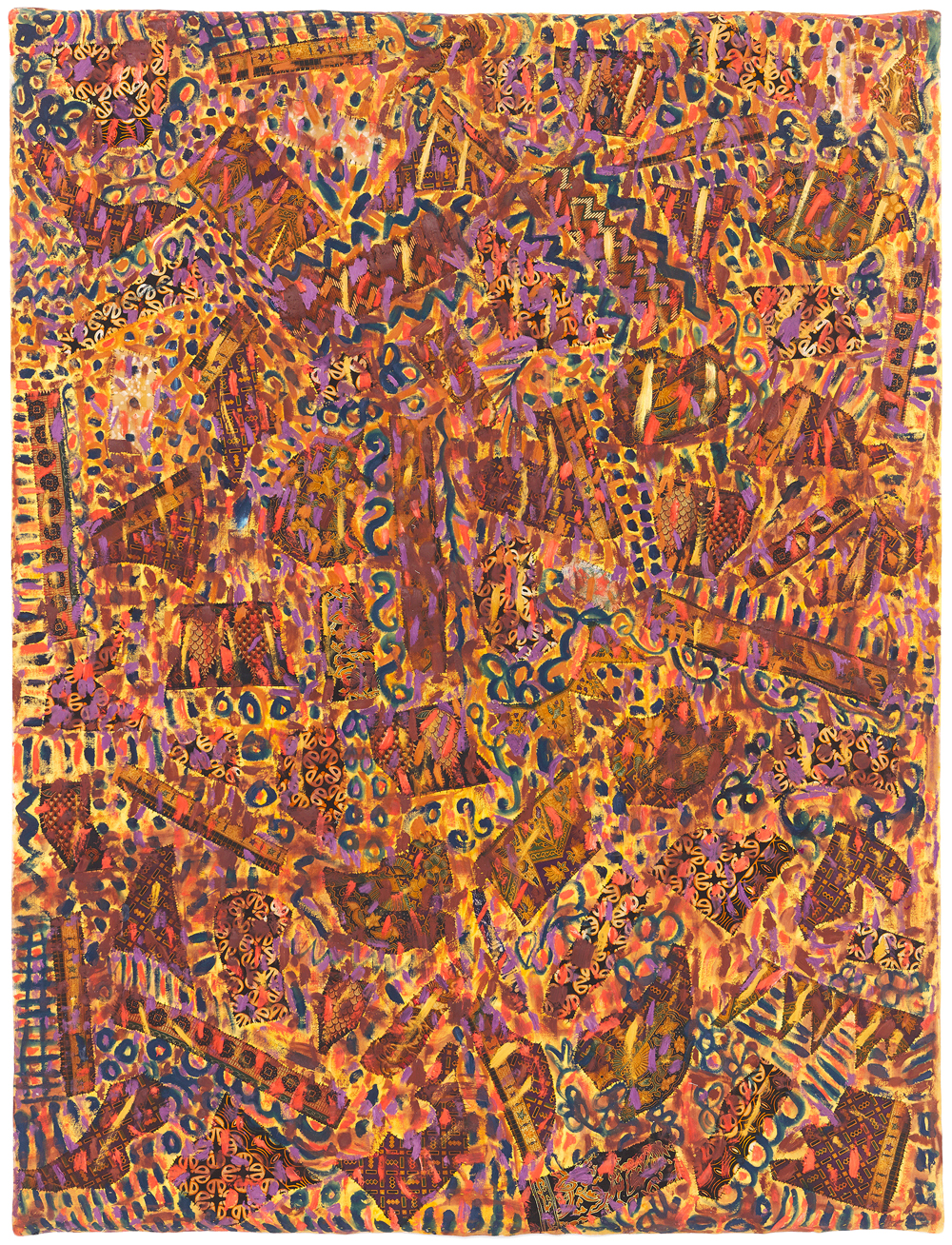
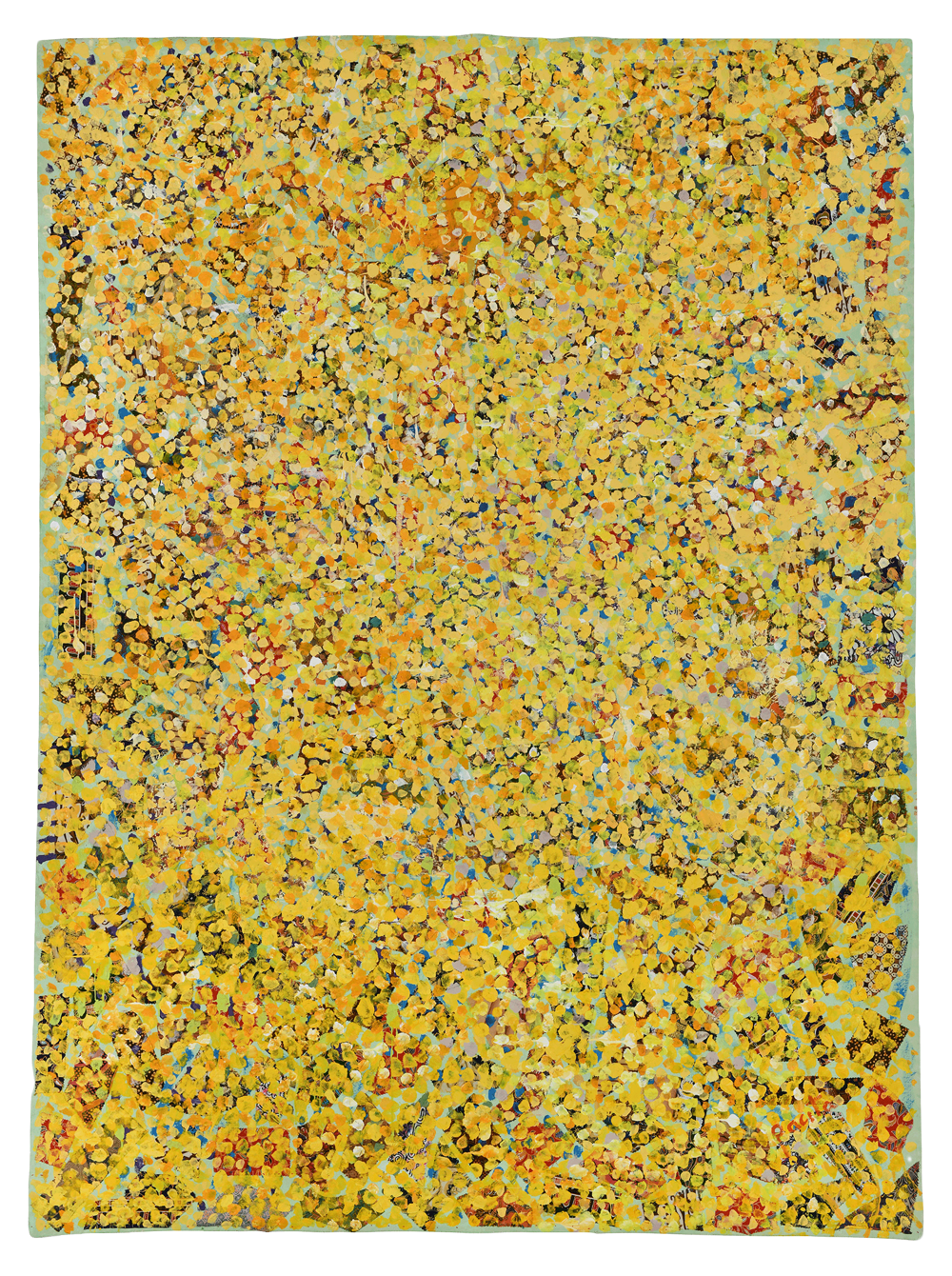
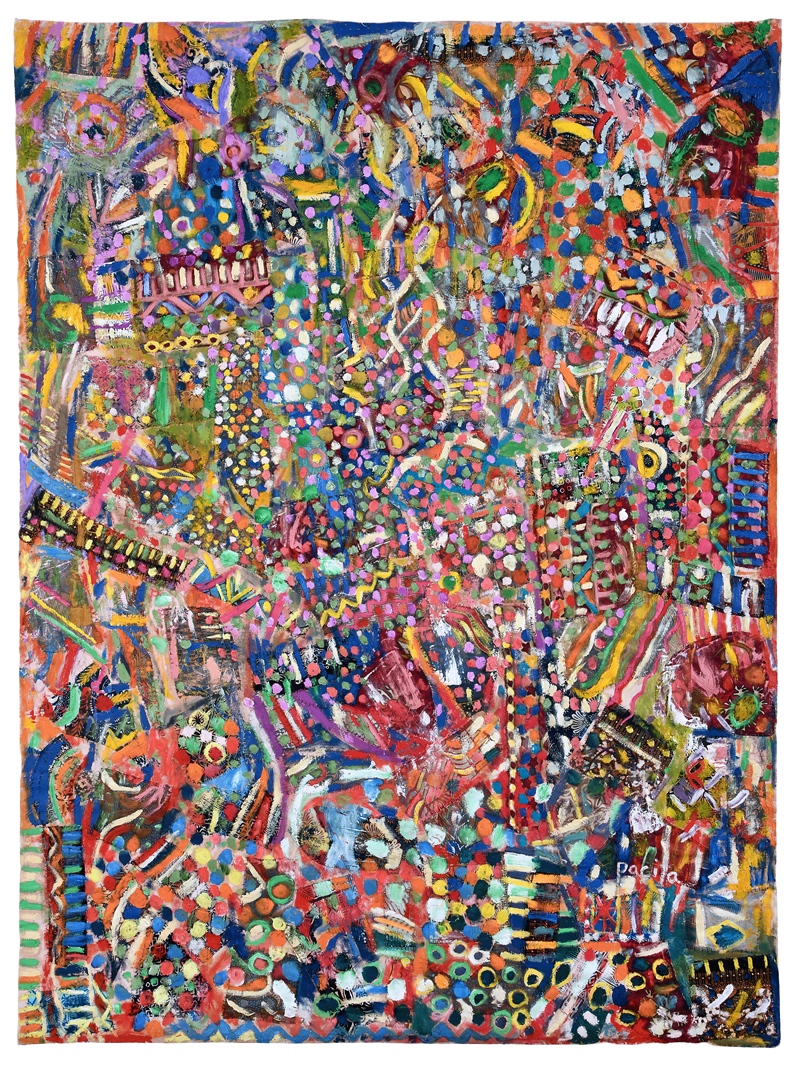
Pacita Abad: Endless Blues Walkthrough with Pio Abad
Art Basel 2021 Online Viewing Room
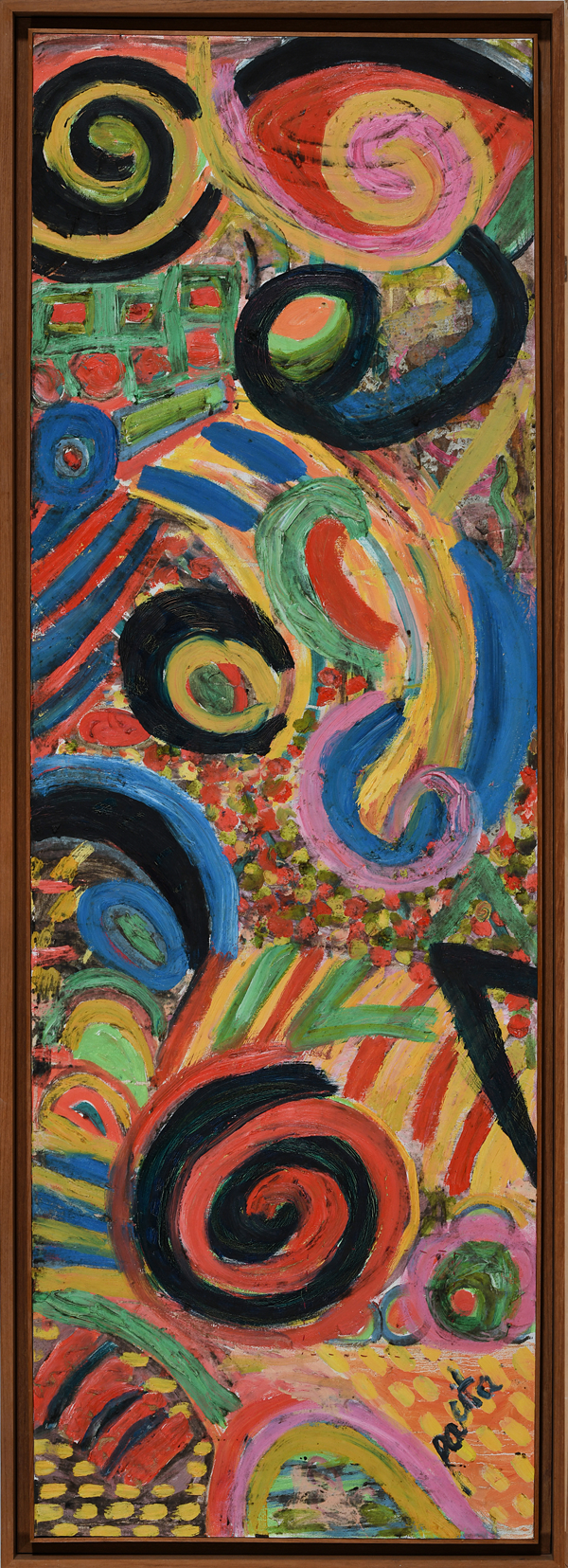
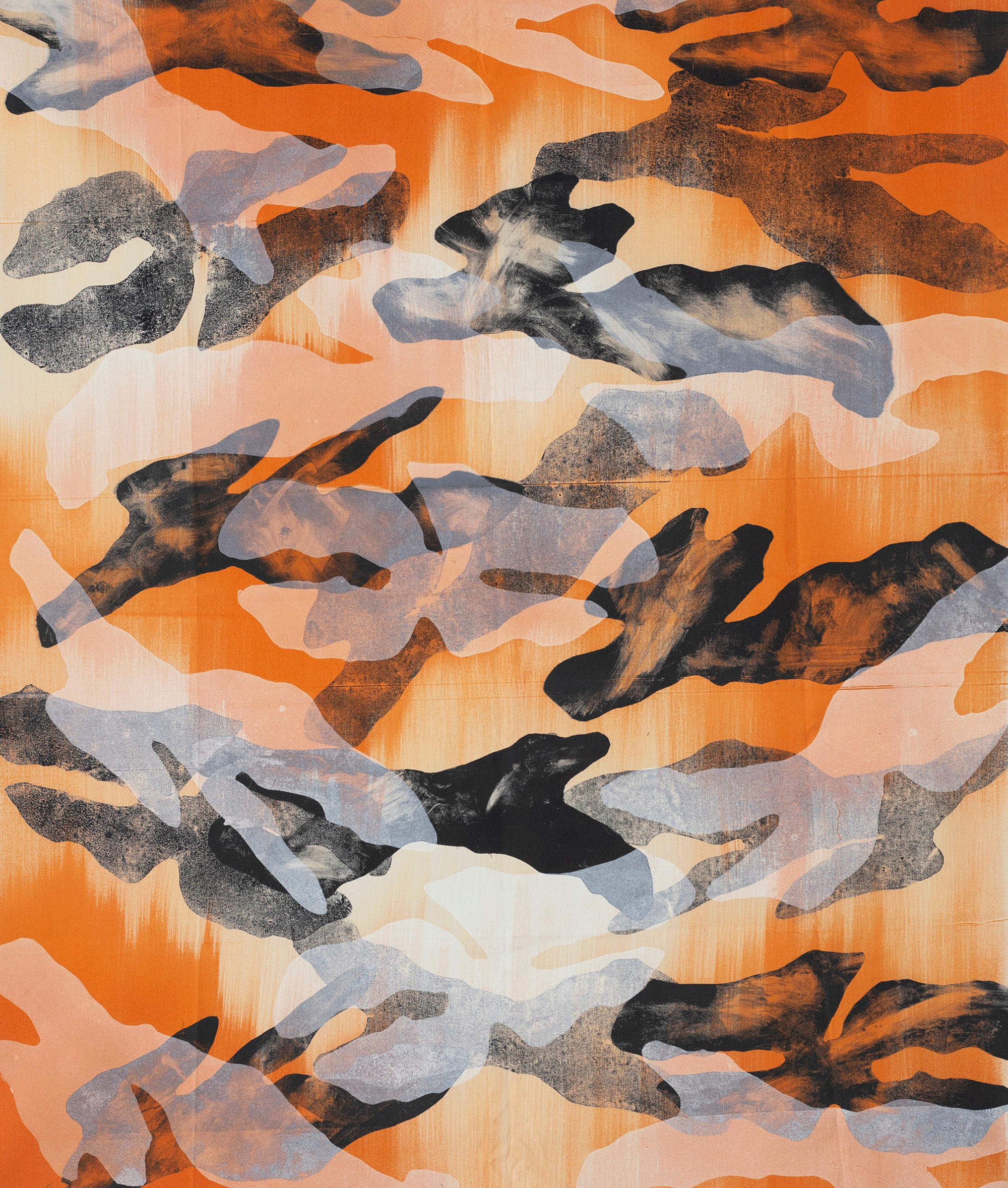
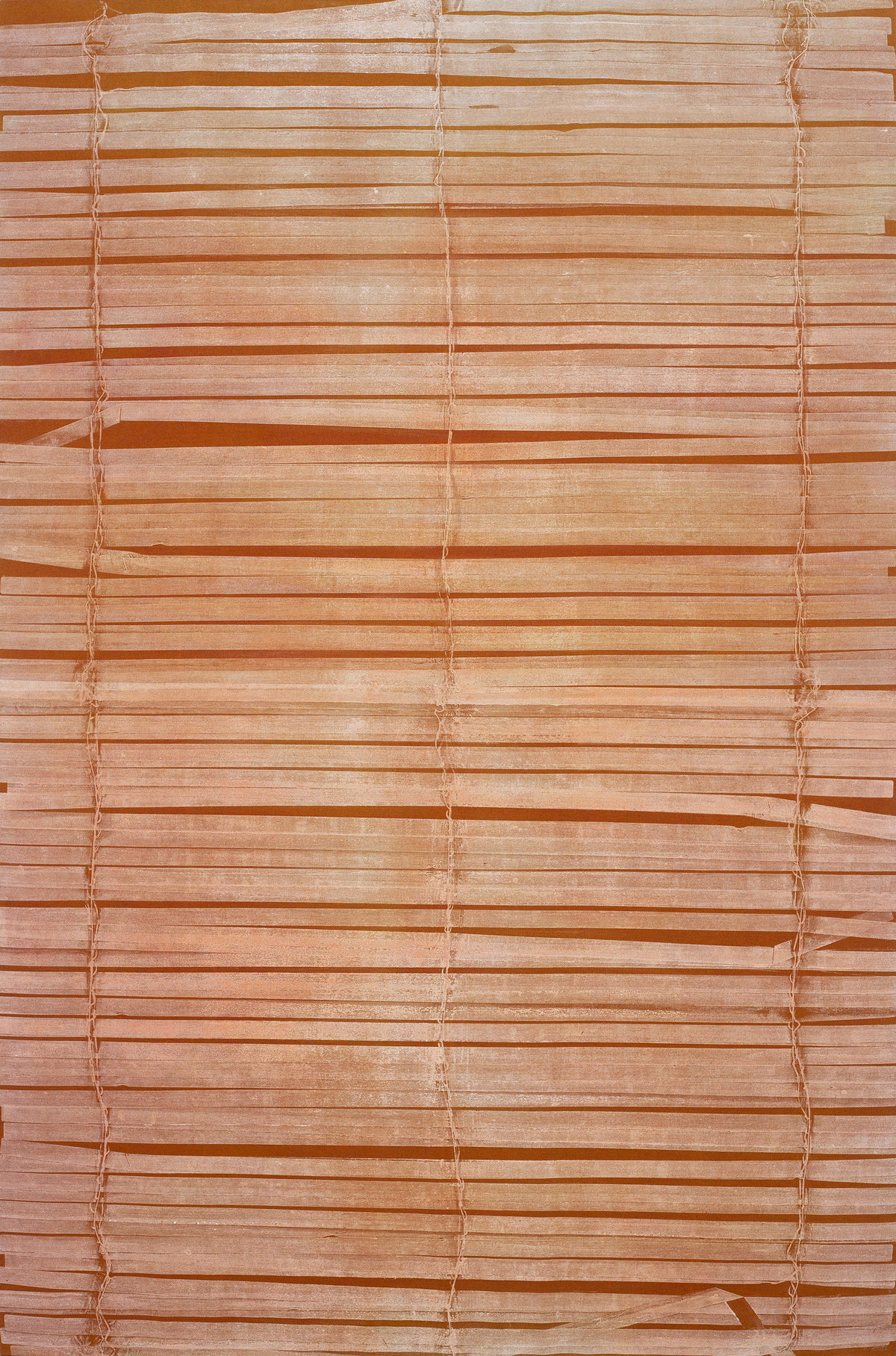
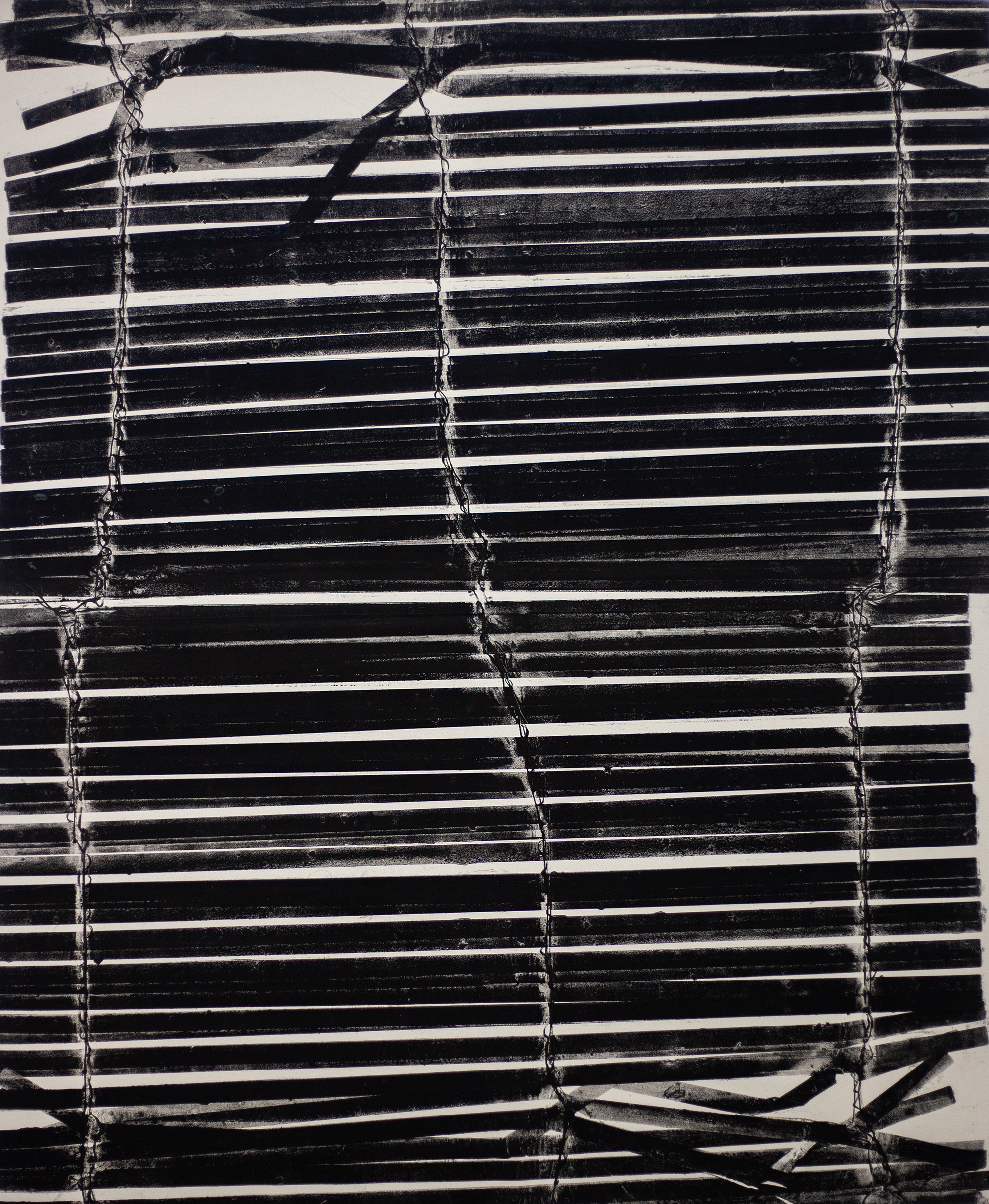
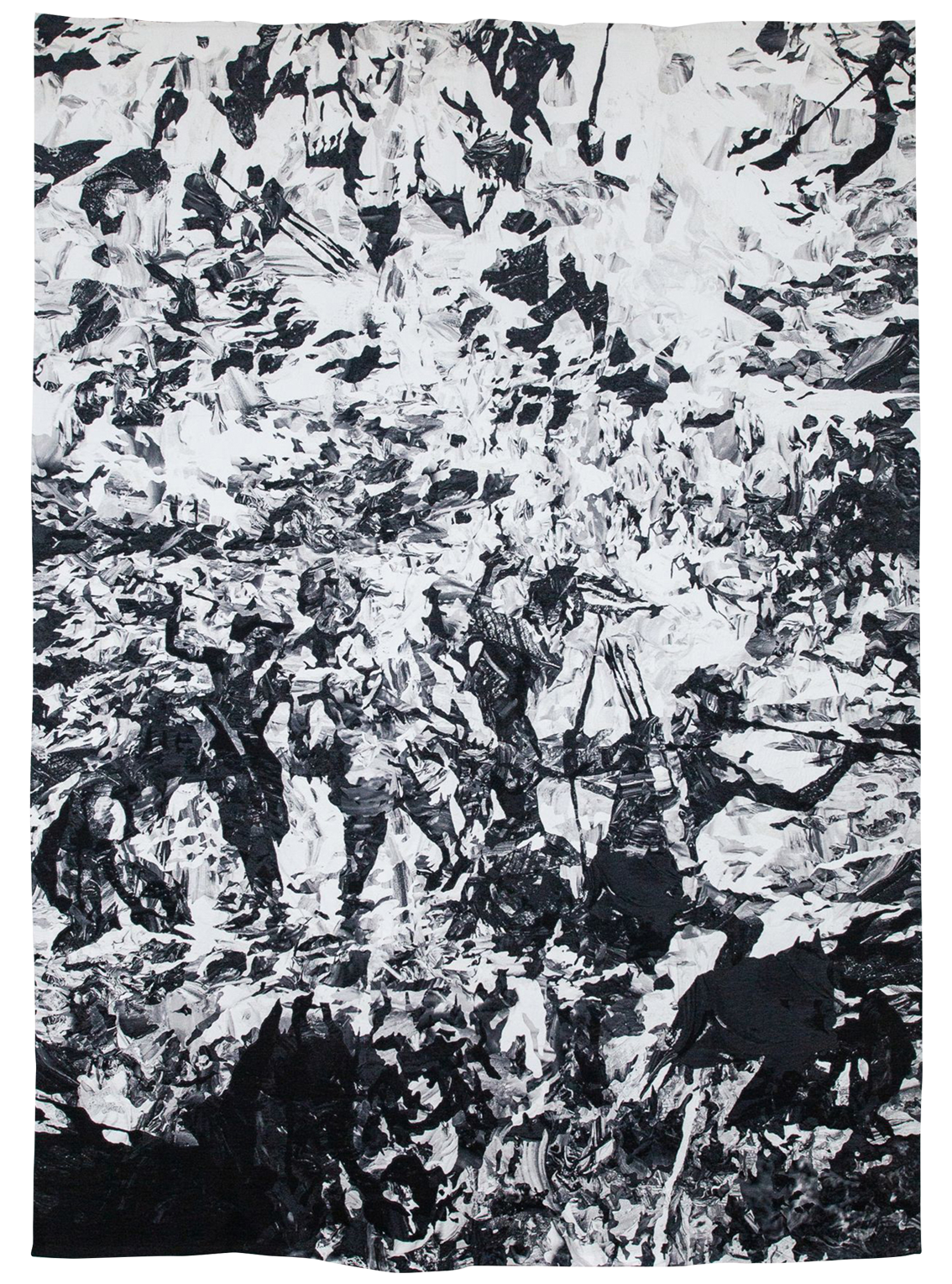
SPI_PE096
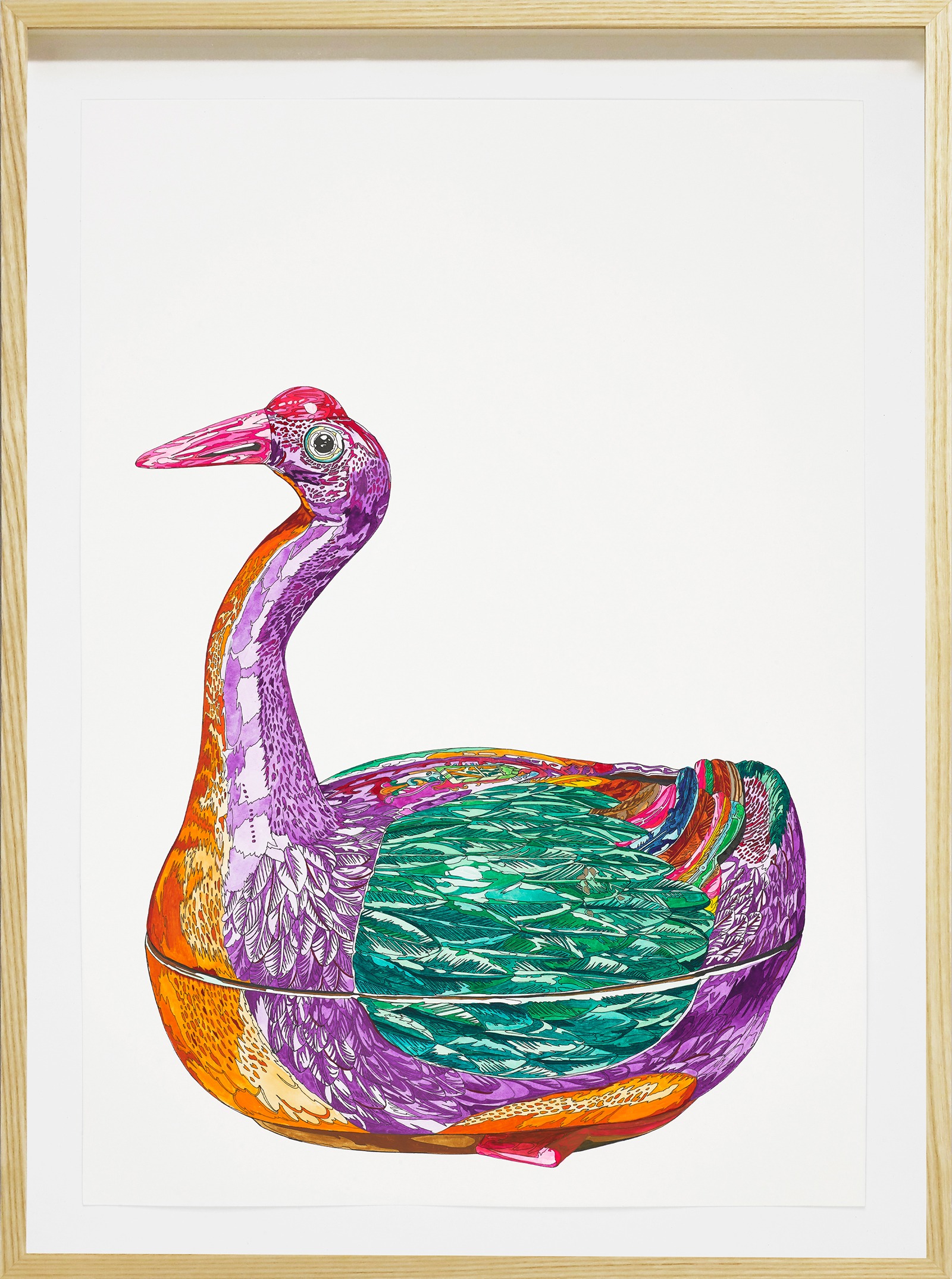
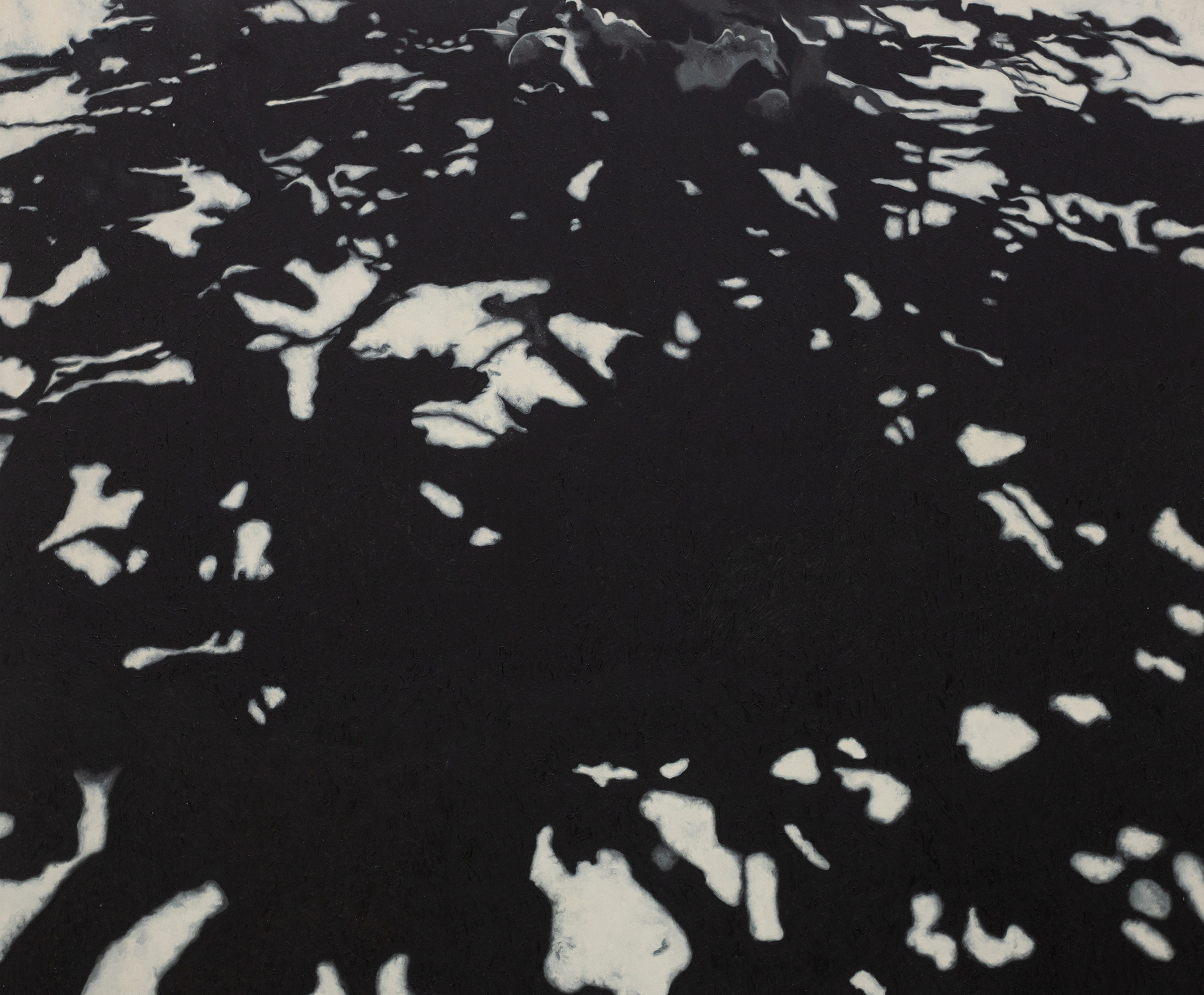
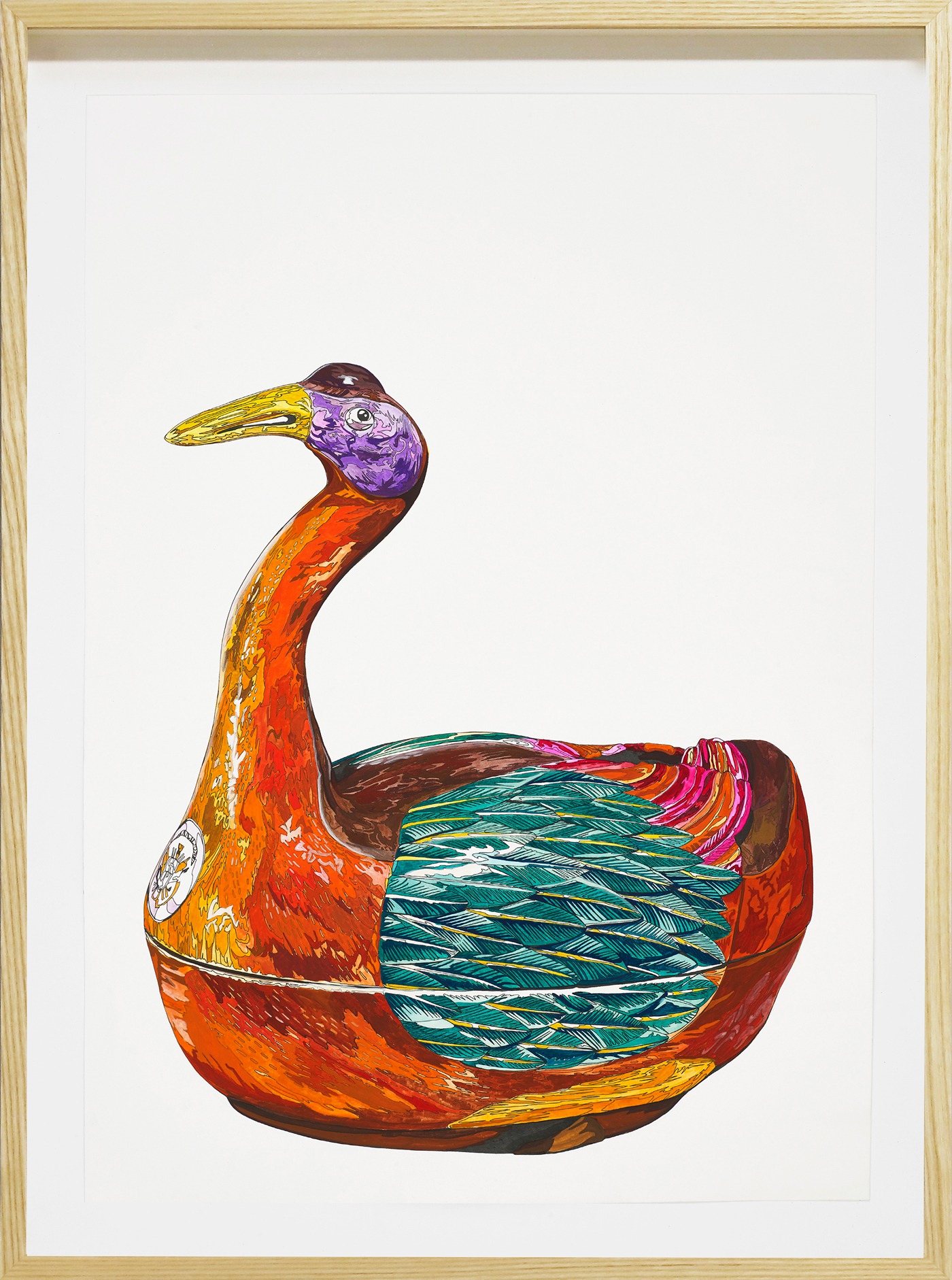
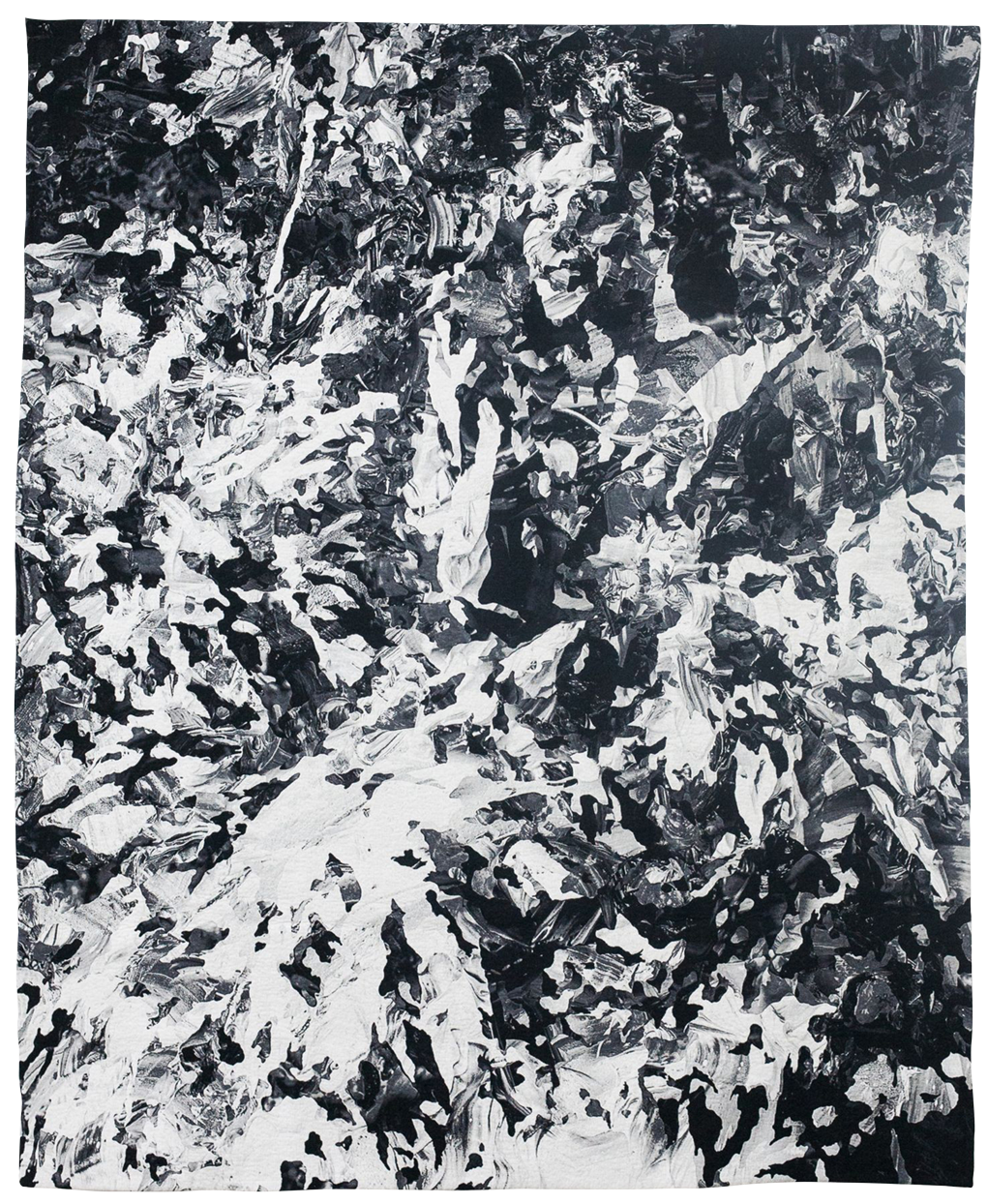
SPI_PE047_001
